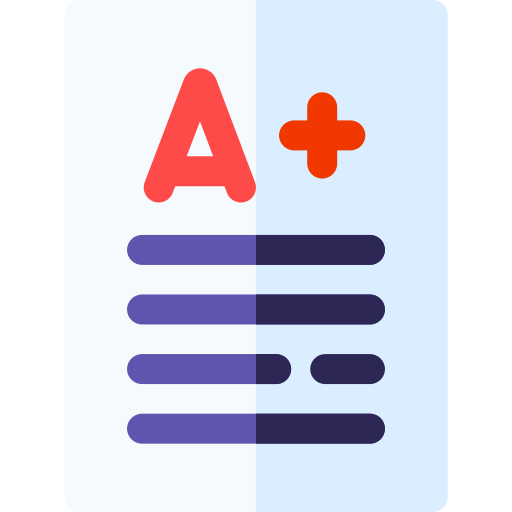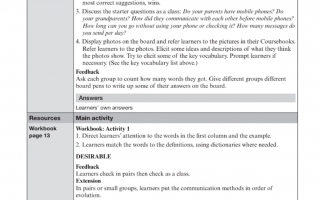دليل المعلم الوحدة الثانية اللغة الإنجليزية للصف الحادي عشر الفصل الأول
Starter
I. Learners brainstorm different forms of communication in small groups on mini whiteboards
2. Set a time limit (for example, one minute) and tell learners that the tuun with the most correct suggestions, wins
3. Discuss the starter questions as a class: Do your parents have mobile phones ? Do your grandparents ? How did they communicate with each Other before mobile phones, How long can you go without using your phone or checking it ? How many messages do you send per day
4. Display photos on the board and refer learners to the pictures in their Coursebooks Refer learners to the photos. Elicit some ideas and descriptions of what they think the photos show. Try to elicit some of the key Prompt learners if necessary. (See the key vocabulary list above )
Feedback
Ask each group to count how many words they got. Give different groups different board pens to write up some of their answers on the board
Answers
Learners' own answers
Main activity
Workbook: Activity 1
I. Direct learners' attention to the words in the first column and the example
2. Learners match the words to the definitions, using dictionaries where needed
DESIRABLE
Feedback
Learners check in pairs then check as a class
Extension
In pairs or small groups, learners put the communication methods in order of evolution lc; 2f; 3d; 4a; 5b; 7e
Differentiation activities (Support)
I. Put learners in mixed ability pairs. Differentiation activities (Stretch)
I. Learners brainstorm more words and phrases related to the topic
2. And / or learners write sentences using the new lexis
: Activity 3
I. Direct learners' attention to the Language tip
2. Go through examples and some others to explain the coordinating conjunctions and correlative conjunctions Could use the transcript here to find more examples for analysis
3. Learners complete sentences individually. Explain that in most cases there is more than one possible answer
4. In pairs, learners check their answers
CORE
Feedback
Feedback as a class and discuss some of the statements Who agrees / disagrees Possible answers: a Neither my grandmothff nor my grandfather has a smartØone' My grandmother dæsn't have a smartphone nor ciæs my grandfatt-•-. b I spend thræ hours a day online, but my sister spends five; c Both my brother and my cousin have two laptops / My brother md my cousin have two laptops; d has global but it has in the loss of real human contact. e We are all »al citizens for we have the ability to connæt with different countries and cultures
Differentiation activities
I. Encourage learners to focus on rewriting sentences using rather than
Differentiation activities (Stretch)
I - Encourage learners to write both
coordinating and correlative conjunctions where ble
: Activities 5 and 6
I. Direct learners' attention to the Speaking tip box. Go through it with the class
2. If you wish, listen to the of the lecture again (Audio Track 16) to remind learners where the s}Raker stresses and pauses
See the notes for listening Activity 3 in the previous lesson. Drill some sentences with the class 3. Handout PCM 3 or write it on the board. Learners plan what they are going to say by making notes in the graphic organiser. They think about what is good and what is not so gocx.i about their communication habits and daily technology use. Encourage learners only to make notes and not write full sentences
4. Learners have a brief practice of what they are going to say. Learners take it in turns to tell each other about their communication habits, technology use and ommons
4. Learners that are on and utilise stress and intonation. as the SBeaking tip
5. Learners who are listening, copy the graphic organiser in Activity 6 into their notbooks They use it to note down what their partners are telling them
6. If time. learners could go on to form new partnerships talk about themselves again
as well as their partners using the notes they have made
CORE
Feedback
a few learners to how their habits compared to those with whom they spoke
Learners' own answers
Language focus: Activity 3
l. Write the sentences on the t»ard and ask for volunteers to combine them using who or which. Point out that they may need to leave out a word. Don't correct but encourage other learners to help as a class, they will able to provide the correct version. Don't worry atx»ut commas at this stage
2. Ask some concept -check questions such as what does who / which refer to? What changes are made? Which words are omitted
3. Elicit which sentence is giving essential information and which is giving extra information
4. Ask for volunteers to cx»me and make the necessary punctuation changes Refer learners to the Use of English box. Go through it with the class
5. Refer learners to Coursebook Activity 2. Have them find and underline further examples of relative pronouns. Elicit answers and write them on the board
6. Refer learners to the Language tip. Have them look at the sentences they underlined from Coursebook Activity 2. They change •which' or •who' to •that' wherever Check answers as a class Write the answers on the board
CORE
1 We used the antivirus which 2 Fafrna, who is intelligalt, is studying computer science at university./ Fatima, who is studying computer science at university, is intelligent
Differentiation activities
Provide more examples for Learners Encourage teaching
Differentiation activities (Stretch)
Learners provide their own examples using real life examples or WorktHHbk: Activity 1
I. Learners circle the correct answer
2. Learners work individually
CORE
Class feedback. Elicit learners' own examples to check understanding of use of other relative pronouns
1 which; 2 who; 3 wh«e; 4 whose; 5 wtW1; 6 non -defining
Activity 2
I. Go through the example with learners
2. Learners complete rest of activity. Can done in pairs but ensure every learner writes the answer in his / her Workbook
DESIRABLE
Group feedback. Have learners write answers on tx»ard. Encourage Exer correction if
Possible Answers
1 That man, who used to a hacker, works for a company now, 2 This file. which storß my details. is protected; 3 The mm who next dmr is a computer





